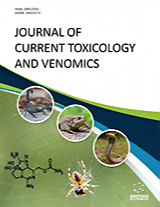Abstract
Background: Some neurotoxins inhibit nerves strongly. Saxitoxins and tetrodotoxin exhibit strong affinity for various voltage-gated sodium channels (VGSCs), including Nav 1.7, but low affinity for Nav 1.8. Emerging data suggests AGAP mediate analgesia by binding voltage-independently to sodium channel site-3.
Objective: This study examined AGAP's mechanism and analgesic efficacy during sciatic nerve block.
Methods: In rats, partial sciatic nerve ligation caused rapid and persistent mechanical hyperalgesia. Mechanical hyperalgesia after medication delivery was assessed with von Frey filaments. Western blot and immunohistochemical staining assessed VGSC expression following drug treatment.
Results: The data showed that lidocaine and AGAP increased paw withdrawal threshold compared to control rats. Compared to the control group, lidocaine or AGAP inhibited VGSCs.
Conclusion: This study suggested that AGAP inhibits VGSCs to elicit lidocaine-like analgesia.








